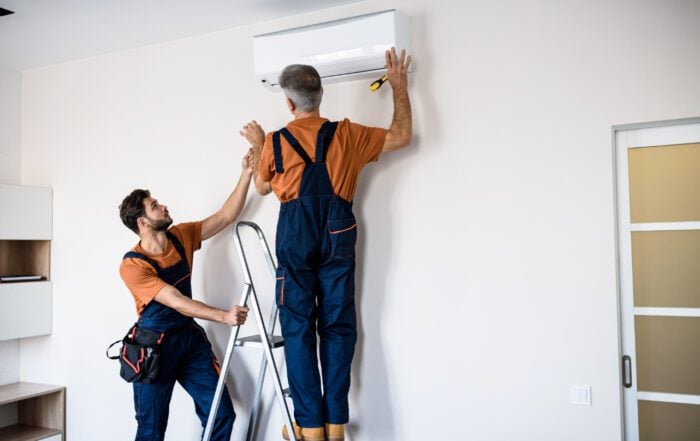Now that the weather is cooling down and you’ve used the last bit of air conditioning for the season, it’s time to prepare your HVAC system for heating your house this winter. There are some things you can do yourself to prepare your system, but other procedures might require an HVAC diagnostic from an experienced technician. Nevertheless, here are some areas you should pay special attention to when checking your HVAC system for the fall.
Air Filter
A good place to start with your at-home HVAC diagnostic is the air filter. The air filter is one of the most common places where issues begin with an HVAC system, and can be easy to address yourself. If you have been running your HVAC system during the summer for air conditioning, there’s a good chance that the air filter needs to be cleaned or replaced. Starting the season with a fresh air filter will reduce the presence of allergens in your home and allow air to flow more efficiently through the HVAC system and vents.
Test and Adjust Thermostat
If you have preset settings or temperatures saved on your thermostat for the summer, don’t forget to change the settings to better suit cooler weather conditions. If you’ve noticed that your thermostat hasn’t been producing the exact temperature it reads, this may be a good opportunity during your HVAC diagnostic to test the thermostat itself. Testing the thermostat temperature readout can be a little more involved than a simple HVAC diagnostic, so don’t hesitate to call an experienced technician for help with this part of the process.

HVAC Outdoor Areas
If you have an HVAC system for your home or building, the unit itself most likely will be outside. Since the unit is out in the open to weather conditions and anything else, it’s always good to check on the unit to clear it of any debris or overgrowing plants. After you clear the area around your unit, continue your HVAC diagnostic by shining a light into your unit. Look for any bugs or insects that may have made their way inside the unit for shelter. Understandably, bugs or insects in your unit will hinder its overall performance.
Check the Drain Line
Just like many other systems, an HVAC system has a drain line to remove excess water or moisture that can build up from usage. If this drain line is clogged or blocked by debris, your HVAC unit might leak this excess water, potentially causing further issues and problems. If you feel comfortable going into your HVAC unit yourself and finding the drain line, you should be able to clear it out manually or by pouring a bleach solution through the line to clean it. Make sure you approach this operation carefully, especially if choosing to use bleach. Ensure the bleach solution does not go anywhere else in the HVAC unit than to clear out the drain line.
Schedule an HVAC Diagnostic
You can perform a simple HVAC diagnostic by following our suggestions, but if you would like a more detailed inspection it’s best to call a certified technician. An experienced technician will know exactly what to look out for and will also be able to find additional issues that you might not have noticed or considered. Regularly scheduled maintenance will save you energy in the long-run by keeping your HVAC system working at peak performance. If there are any blockages, clogs, or not working parts, the entire unit will have to work harder to run properly, and therefore will use more energy and electricity.
Get an HVAC Diagnostic through Stack
Stack Heating, Cooling, Plumbing & Electric provides HVAC diagnostics all year round to catch any problems with your heating or cooling systems. Visit our website or call (440) 937-9134 today!
Have Any Questions?
If this is an emergency please call 440-937-9134.
Otherwise, please feel free to call us or submit this form to schedule an appointment for service or request an estimate. We will contact you shortly!




